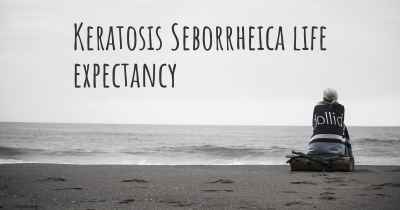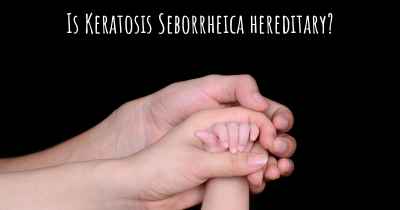Living with Keratosis Seborrheica. How to live with Keratosis Seborrheica?
Can you be happy living with Keratosis Seborrheica? What do you have to do to be happy with Keratosis Seborrheica? Living with Keratosis Seborrheica can be difficult, but you have to fight to try to be happy. Have a look at things that other people have done to be happy with Keratosis Seborrheica

Living with Keratosis Seborrheica
Keratosis Seborrheica, also known as seborrheic keratosis or seborrheic warts, is a common skin condition that affects many individuals. While it is generally harmless and non-cancerous, living with Keratosis Seborrheica can sometimes be bothersome due to its appearance and potential symptoms. However, with proper care and management, you can effectively live with this condition and minimize its impact on your daily life.
Understanding Keratosis Seborrheica
Keratosis Seborrheica is characterized by the development of benign growths on the skin. These growths typically appear as brown, black, or tan patches or bumps with a waxy or scaly texture. They can vary in size and shape, ranging from small dots to larger plaques. While they can occur anywhere on the body, they are most commonly found on the face, scalp, chest, back, and shoulders.
Managing Symptoms
Although Keratosis Seborrheica is generally asymptomatic, some individuals may experience mild itching or irritation in the affected areas. To manage these symptoms:
- Keep the skin clean: Gently wash the affected areas with a mild cleanser and lukewarm water. Avoid using harsh soaps or scrubbing vigorously, as this can further irritate the skin.
- Moisturize regularly: Apply a gentle moisturizer to keep the skin hydrated and prevent excessive dryness. Look for products that are non-comedogenic and fragrance-free.
- Avoid scratching: Itching can worsen the condition and potentially lead to infection. If you experience itching, try using over-the-counter hydrocortisone creams or consult a dermatologist for appropriate treatment options.
Camouflaging Techniques
While Keratosis Seborrheica is harmless, some individuals may feel self-conscious about the appearance of the growths, especially if they are prominent or located on visible areas of the body. Here are some techniques to help camouflage the affected areas:
- Makeup: Use a color-correcting concealer or foundation to even out the skin tone and minimize the appearance of the growths. Opt for products that are non-comedogenic and suitable for your skin type.
- Clothing choices: If the growths are on your body, wearing clothing that covers the affected areas can help conceal them. Choose fabrics that are comfortable and breathable.
- Hair styling: If the growths are on your scalp, experimenting with different hairstyles or haircuts can help draw attention away from them.
Seeking Medical Advice
While Keratosis Seborrheica is generally harmless, it is important to consult a dermatologist if you notice any changes in the growths or experience any concerning symptoms. A dermatologist can accurately diagnose the condition and provide appropriate treatment options if necessary. They may recommend:
- Cryotherapy: Freezing the growths with liquid nitrogen to remove them.
- Curettage: Scraping off the growths using a specialized instrument.
- Electrocautery: Burning off the growths with an electric current.
- Topical medications: Prescription creams or ointments that can help reduce the appearance of the growths.
Self-Care and Prevention
While there is no surefire way to prevent the development of Keratosis Seborrheica, adopting a healthy skincare routine can help maintain overall skin health and potentially minimize the occurrence of new growths. Here are some self-care tips:
- Sun protection: Protect your skin from harmful UV rays by wearing sunscreen with a high SPF, seeking shade, and wearing protective clothing.
- Maintain a healthy lifestyle: Eat a balanced diet, exercise regularly, and get enough sleep to support your skin's overall health.
- Regular skin checks: Monitor your skin for any changes or new growths. If you notice anything unusual, consult a dermatologist for evaluation.
Living with Keratosis Seborrheica doesn't have to be a cause for significant concern. By understanding the condition, managing symptoms, and seeking appropriate medical advice, you can effectively live with this common skin condition while maintaining your overall well-being.








